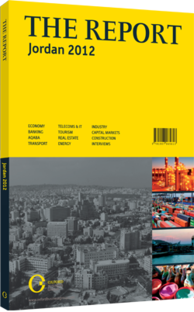Supporting security: Despite progress, much needs to be done to introduce nuclear power
Longstanding plans to develop Jordan’s nuclear energy resources gained some momentum, but also suffered some setbacks . The controversial project remains politically divisive and has several obstacles yet to navigate, including the selection of an appropriate site for a planned reactor, the provision of adequate financial and human resources, and the finalisation of a strong regulatory framework for the sector.
On May 30, 2012, parliament passed a bill requiring work on Jordan’s nuclear programme to stop, with the exception of efforts to prove the programme’s merit. For the programme to proceed, parliament required three steps: “bankable feasibility studies” of the uranium exploration and reactor newbuild efforts (the programme’s two key components), the securing of financing, and the selection of a reactor site conforming to international regulations. The vote suspending the country’s nuclear programme should have little practical effect, however, because work at the Jordan Atomic Energy Commission (JAEC) is already underway to meet the lawmakers’ requirements to keep the effort afloat, the commission told OBG.
URANIUM RICH: Recent exploration activities have confirmed that Jordan is home to substantial uranium reserves – perhaps more than 100,000 tonnes. Playing in the project’s favour are Jordan’s assiduous efforts to secure support from the international community. In addition to signing several International Atomic Energy Agency (IAEA) agreements and the Treaty on the Nonproliferation of Nuclear Weapons, Jordan is working to become party to other conventions, according to a 2011 report by the Brookings Institute. According to Khaled Toukan the chairman of the JAEC, “Jordan’s peaceful nuclear programme, which is being conducted in the most transparent manner, and has involved close cooperation with the international community, represents a model that other countries interested in nuclear power generation can follow.”
Perseverance is paying off. In January 2012 the US withdrew its objection to Jordan enriching uranium on its own soil – a position it had held since 2007. The JAEC said it expected to see a nuclear cooperation agreement signed with the US by the end of 2012.
QUESTION MARKS: But at home, support for the nuclear option is still divided. Having announced a site for the nuclear reactor near Mafraq in February 2012, the JAEC has subsequently extended the search, following reported opposition from residents in the area and taking heed of lessons learned from the Fukushima incident in Japan related to public perception, distance from international boarders and populated areas, emergency planning, external hazards (including seismic hazards) and other site safety-related issues. The authorities have begun looking near the Al Samra Wastewater treatment plant, which is planned to provide the main source of cooling water for the reactor.
With construction costs for the reactor projected at $5bn, the government is hoping to share the burden via a public-private partnership (PPP) with the bidder. The 2011 meltdown at the Fukushima reactor has meant that global demand for new reactors has decreased – meaning the government is in a stronger position to secure a favourable division of finances with its private partner, suggests the Brookings Institute.
PREPAREDNESS: Looking ahead, Jordan must also ensure the project has access to the requisite technological and human resources, as well as a sturdy regulatory framework. Having already employed Worley Parsons and Belgium’s Tractebel in its initial consultations, as well as several multinationals for uranium exploration, Jordan will continue to search out the services of private sector partners. The government has formed a five-year human resources strategy to ensure the growth of Jordan’s local expertise keeps pace with its nuclear ambitions. It includes the establishment of a nuclear engineering department offering master’s and PhD programmes at the Jordan University of Science and Technology and even hopes that the Jordan Research and Training Reactor – due to come on-line in 2015 – could become a regional knowledge centre.
You have reached the limit of premium articles you can view for free.
Choose from the options below to purchase print or digital editions of our Reports. You can also purchase a website subscription giving you unlimited access to all of our Reports online for 12 months.
If you have already purchased this Report or have a website subscription, please login to continue.

